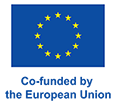

The EU-Japan Centre is pleased to start a new weekly service by publishing brief summary of the latest information from the Japanese governmental organizations & private companies/organizations. A couple of minutes reading to be informed about what is happening in Japan's policy, economy, EU-Japan relations, and innovation.
*Information is deemed correct at the time of release.
The birth rate in 2022 was 1.26, the lowest ever
The Ministry of Health, Labor and Welfare announced on June 2 that the total fertility rate, which indicates the number of children a woman give birth to in her lifetime, was 1.26 in 2022. It was the lowest on record in 2005. The decline was the seventh consecutive year, and was affected by the slump in the number of marriages due to the COVID-19. The number of births decreased by 5% (40,875) from the previous year to 770,747. It is the first time since statistics began in 1899 that the number of births excluding foreigners fell below 800,000.
With the aging of the population and an increase in the number of deaths from the COVID-19, the natural decline in the population in 2022 reached a record high of 798,214 people. This is about 170,000 more than the decrease in the previous year and the 16th consecutive year of natural decline. The number of marriages increased for the first time in three years, reaching 504,878, but the growth rate was only 0.7%. It is difficult to predict whether the number of marriages, which had been put on hold due to the COVID-19 will begin to rise again.
The speed of population decline exceeds expectations. The future population projections published by the National Institute of Population and Social Security Research in 2017 estimated the fertility rate to be 1.42 and the number of births to be 854,000 in 2022 in the median projection. The reality is about 80,000 fewer than this. Japan is at the brink of whether it will be able to maintain its social and economic vitality.
MHLW website (in Japanese):
https://www.mhlw.go.jp/toukei/saikin/hw/jinkou/geppo/nengai22/dl/kekka.pdf
Three Japanese companies, a Singaporean company, and an Australian company to build a green hydrogen supply network
On May 29, Iwatani Corporation, Kansai Electric Power, Marubeni Corporation, Stanwell, an energy infrastructure company owned by the Queensland state government of Australia, and Keppel (Singapore) announced that they have agreed to jointly implement the CQ-H2 project, which produces green hydrogen derived from renewable energy in Queensland, Australia. It would be liquefied, exported and supplied domestically and internationally on a large scale.
The hydrogen production is expected to be 200 tons/day (equivalent to approximately 70,000 tons/year) around 2028, and 800 tons/day (equivalent to approximately 260,000 tons/year) after 2031.The estimated initial cost is A$ 117 million (approximately JP¥10.53 billion), and ARENA plans to subsidize A$ 20 million (approximately JP¥ 1.8 billion). The company plans to gradually start producing and supplying liquefied hydrogen from around 2030.
The Kansai Electric Power Co., a candidate to purchase the produced liquefied hydrogen, plans to consider supplying it to thermal power plants in the Himeji area and to surrounding customers. In addition, some of the produced green hydrogen is planned to be supplied from around 2028 to the ammonia synthesis facility under consideration by Keppel and Australian chemical manufacturer Incitec Pivot Limited. They plan to consider supplying green ammonia not only for its own hydrogen co-firing power plant, but also for domestic demand in Australia.
Iwatani website:
https://www.iwatani.co.jp/eng/news/files/2023/20230529_news_e.pdf
Itochu and Neste to sell renewable diesel in Japan
On May 29, ITOCHU Corporation announced that it entered into a partnership with Neste (Finland), the world's largest manufacturer of renewable fuels, to expand distribution in Japan of Neste MY Renewable Diesel (RD) produced by Neste. The company has signed a trademark license agreement and a collaboration agreement to strengthen branding. Neste plans to expand production of recycled aviation fuel SAF and RD, for which further demand is expected in the future.
Based on this license agreement, ITOCHU will secure an import base for RD and start importing by tanker from the second half of FY2023. In addition, it plans to expand the current supply areas of the Tokyo metropolitan area and the Chukyo area to the Kansai area, where the momentum for RD use will increase with the Osaka-Kansai Expo to be held in 2025.
Neste's "Neste MY Renewable Diesel" is manufactured from waste cooking oil, waste animal and vegetable oil, etc., which have no food competition, and reduces GHG emissions by about 90% compared to petroleum-derived light oil on a life cycle assessment basis. As a "drop-in fuel," RD makes it possible to reduce emissions while utilizing existing distribution infrastructure and internal combustion engines.
ITOCHU website:
https://www.itochu.co.jp/en/news/press/2023/230529_2.html
Government decides on inbound expansion action plan
On May 30, the government decided on the "New Era Inbound Expansion Action Plan". From the perspective of "attracting foreign tourists" so far, it has broadened the horizons and compiled measures to "strengthen and effectively establish inbound demand." The Ministry of Economy, Trade and Industry aims to create new business and inbound markets through each measure.
This action plan target is as follows. 1) By 2030, the number of international conferences held in the business field will be ranked within the top five in the world, 2) To increase the number of foreign visitors to international exhibitions and trade fairs by 20% from before COVID-19 by 2025, 3) In the fields of education and research, increase the number of researchers from overseas by 20% by 2025 compared to pre-COVID-19, 4) In the field of culture and arts, it will make inroads into global seven by 2025 by inviting international art fairs.
METI website (in Japanese):
https://www.kantei.go.jp/jp/singi/kankorikkoku/kettei/siryou16.pdf
Second Intergovernmental Negotiating Committee on plastic pollution was held
From May 29 to June 2, the second Intergovernmental Negotiating Committee to develop a legally binding convention on plastic pollution was held in Paris, France. About 1,700 people from about 170 UN member states, related international organizations, and NGOs participated in this meeting. From Japan, a government delegation consisting of the Ministry of Foreign Affairs, the Ministry of Economy, Trade and Industry, and the Ministry of the Environment attended.
During the negotiations, discussions were held on (1) the purpose and core obligations of the treaty, and (2) the means of implementing the treaty obligations. About (1), Japan proposed that the objective of the Convention should be to reduce additional pollution to zero by 2040. In addition, as a means of fulfilling the obligations of the Convention as (2), Japan proposed (i) the establishment of a social system that promotes the recycling of plastics and the control of emissions into the environment, and (ii) the control of pollution at each stage of the entire life cycle of plastics. (iii) the importance of raising awareness and collecting, reusing, and recycling plastics not only at the production and waste management stages, but also at the distribution, sales, and consumption stages.
Although many opinions were put forward by each country, the Chair was given a mandate to prepare a zero draft of the text by the third meeting. As to the next meetings, it was confirmed that the 3rd meeting will be held in Nairobi, Kenya in November 2023, the 4th meeting will be held in Ottawa, Canada in April 2024, and the 5th meeting will be held in South Korea in October or November 2024.
METI website:
https://apps1.unep.org/resolutions/uploads/japanstatement.pdf
Government revises basic hydrogen strategy, supplying six times by 2040
On June 6, the Japanese government held a hydrogen-related ministerial meeting and decided on a new basic strategy to increase the supply of hydrogen. In order to develop the supply chain, the government will invest JP¥15 trillion in the public and private sectors over the next 15 years. It also includes a target of increasing the supply of hydrogen to about 12 million tons by 2040, six times the current level. This new Basic Hydrogen Strategy is the first revision since its formulation in 2017.
The government will start supporting companies to invest in manufacturing equipment and related materials. In addition to "water electrolyzers" , it also target materials such as electrolytic membranes and catalysts that are indispensable for producing hydrogen. Hydrogen is a powerful decarbonized energy that does not emit carbon dioxide (CO2) when burned, but it is essential to reduce the high production costs. The market will be expanded through integrated government support for related industries, and the cost will be reduced to a level that allows widespread use.
METI website (in Japanese):
https://www.meti.go.jp/shingikai/enecho/shoene_shinene/suiso_seisaku/pdf/20230606_1.pdf
Ministry of Economy, Trade and Industry sets 2030 total sales target for domestic semiconductor companies at JP¥15 trillion
On June 6, the Ministry of Economy, Trade and Industry (METI) revised its "Semiconductor Digital Industry Strategy." Aiming to secure a stable supply of semiconductors, it sets numerical targets for sales. The sales of companies that produce semiconductors in Japan are about JP¥5 trillion yen (2020). In order to achieve the goal, additional investment of more than JP¥10 trillion by the public and private sectors will be required over the next 10 years, and large-scale support will be essential. This strategy will be reflected in the basic policy of economic and fiscal management currently under consideration by the government.
Regarding generative AI, it added an industrial strategy to promote its utilization, and presented a policy to develop guidelines for business operators, horizontally deploy good practices, and a study of human resource development measures. AI development requires a large amount of high-quality data, so while paying attention to copyrights, etc., it supports the construction of a mechanism that allows access to data held by public institutions, and the development of data in fields that bring about innovation through the use of AI.
METI website (in Japanese):
https://www.meti.go.jp/press/2023/06/20230606003/20230606003-1.pdf
The EU-Japan Centre currently produces 5 newsletters :









